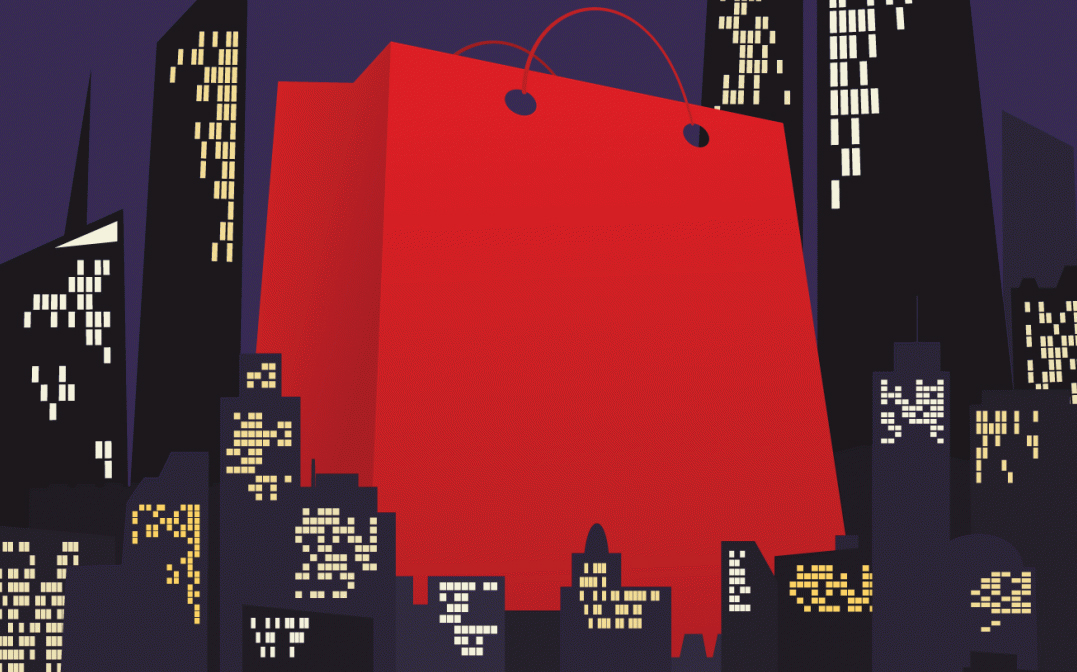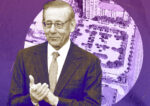 The next generation of offices can be accessed anywhere
The next generation of offices can be accessed anywhere
Trending
Five components of the mall of the future

We all know malls are changing but the way they look isn’t clear yet. A recent report from Coresight Research suggested that as many as 25 percent of malls could close within the next five years.
Part of the problem is that malls themselves are no longer destinations. Most malls look very similar and have the same type of stores. The mall of the future will likely contain a mix of five components: retail, medical, entertainment, food, and housing, whether it is hotels or mixed-use development. However several of those components may be very different than they are now.
Read more
 The next generation of offices can be accessed anywhere
The next generation of offices can be accessed anywhere
 Retail’s After Life: What’s Left for Brick and Mortar Properties Post Apocalypse?
Retail’s After Life: What’s Left for Brick and Mortar Properties Post Apocalypse?
 Not Dead Yet: Understanding Consumer Behavior Is Key to Retail Survival
Not Dead Yet: Understanding Consumer Behavior Is Key to Retail Survival
Retail will move toward omnichannel
One of the biggest trends in retail is what is being called BOPIS. This stands for buy online, pickup in-person. We’ve seen this utilized by restaurants as well as by stores like Target ( This was happening before COVID-19 but has accelerated. Some malls are now reconfiguring to help their tenants figure out BOPIS and its twin BORIS (buy online, return in store). This will make it easier for the stores that are on the interior for their customers to get things and return things as needed. Taking the pain out of returns can also hopefully drive sales. The biggest example of this so far is the partnership between Amazon and Kohl’s which hasn’t yielded strong results so far. Amazon also has a plan to put fulfillment centers in closed anchor stores around the country.
Omnichannel means that if we see something online we have a variety of ways to get it. It can be shipped to us, we can go to the store and buy it to take home, or we can go to the store, look at it, and still have it delivered. That’s an important way to increase interest in malls. Another method is pop-up shops featuring local businesses or popular online brands. There is an opportunity to make malls more individual and curated.
Over the summer, many mall owners got creative, hosting events in their parking lots. Much of the idea of the new retail is about making shopping more of an event. If a mall looks the same as any other mall it may falter. Creating pop-up shops, concerts, signings, anything that drives people in is important. A discount or sale used to be a driver but now a consumer can get that same experience online.
The future of food
We all remember the food courts of our youth but the mall of the future has the opportunity to do a lot more with food. We will see more grocery stores in malls as well as more specialty stores. But what may be more exciting is the future of dining in malls. Older malls such as Ballston Quarter in Arlington, Virginia are adding in food halls that offer a wider variety of restaurants. The challenge is to make a food hall more than just a group of familiar chains but to actually make it exciting and include local restaurants or even food truck favorites.
Another way to capitalize on food and grocery may be for malls to make it easy to pick up meal kits and complete meals. Many chain restaurants have been capitalizing on curbside pickup but bringing meal prep and meal kit service into the malls may be a way to build on an existing trend. A consumer could order meals online through their favorite service and then grab a whole week of meals without worrying about the delivery.
A check-up and more
With the rise of Minute Clinics inside CVS stores and medical services inside Walmarts, it’s only a matter of time before medical care comes to the mall. Urgent care clinics are already a feature inside some malls but we will also see a rise in specialty services including cosmetic procedures. Cosmetic fillers are popular right now and the experience itself is much less medical and becoming much more spa-like. There is a blur that’s happening between beauty salons, permanent makeup, and medical procedures that may not involve a doctor.
Wellness is one of the guiding trends of 2020 and beyond and this can mean simple things like getting your bloodwork done or some of the newer trends like cryotherapy or float tanks. As telemedicine continues to grow we may see an omnichannel effect come to medicine. You may visit your doctor online and then pop into a testing facility for tests, shots, or a prescription.
Malls as hubs
During the heyday of the mall in the 1980s and 1990s, teenagers visited the mall to hang out as much as to purchase things. One thing malls may do is to start becoming hubs. This can have a variety of meanings. A mall can offer co-working. This was a trend that was in place before 2020 with malls inking partnerships with Industrious and other brands. It becomes more interesting now because a mall is probably closer than an office for many workers who now have the option to be remote when they choose to. A co-working facility in a mall could be truly useful if you can also shop there and get a good meal.
Another factor in entertainment. Before the pandemic, we saw mall operators like Simon Property Group putting together gaming spaces through a partnership with Allied eSports. There’s also the opportunity to bring daycare and alternative schooling or entertainment for kids into malls. If you could have a mall that had co-working space for you and there was somewhere that your kids could go for a few hours and have an educational/entertainment experience, that would be pretty valuable to a lot of parents.
It’s really difficult to repurpose a movie theater. Companies may start renting these out or they may be used for live sporting events that are streamed to the facility. Another consideration is gyms. Gyms may be an option for some vacant anchor stores. There may be an opportunity for brands like Peloton or Lululemon to use spaces like this for demonstration facilities and classes.
That mall life
Living in a mall may sound like a teenage fantasy but malls that incorporate housing are nothing new. Many of the newer shopping centers that mirror small towns have some condo space available. One example is California developer Rick Caruso’s American at Brand development. Publicly traded company Seritage Growth Properties is redeveloping former Sears properties into mixed-use developments with apartments. These types of homes may be appealing to both young people who want to have everything within walking distance as well as to older people.
Some of the older Class C and D malls that are losing tenants can instead be redeveloped into properties with an affordable housing component, as well as destination shops, co-working office space, a gym, and more. Some hotels may also be placed inside malls and this could add to the hotel experience. The mall restaurants and stores could deliver directly to the hotel and this might be an excellent way to combine all of the elements that people are looking for.
One thing malls are going to have to figure out across all of these types of experiences is how to create the physical space so that it matches up with the online experience, whether it’s scan and go systems, curbside pickup, the ability to reserve things online and try on in person, or simply the ability to order your food ahead of time. These innovations will help existing real estate appeal to the next generation of consumers. [Propmodo]




